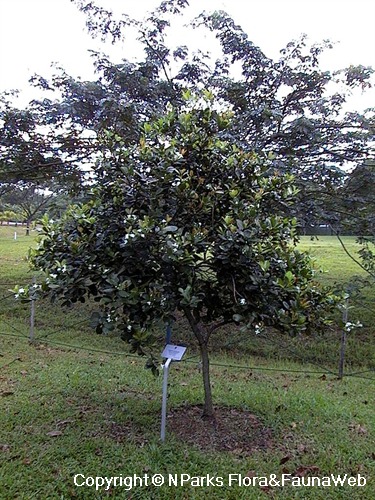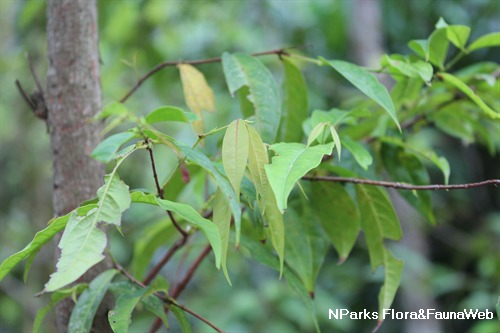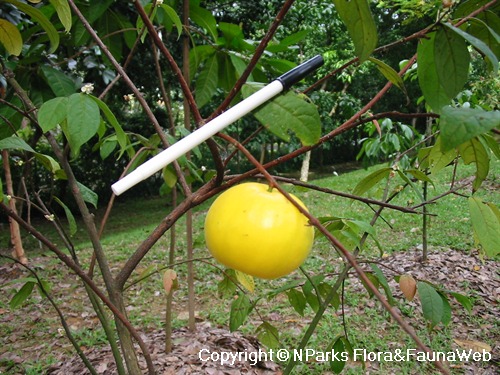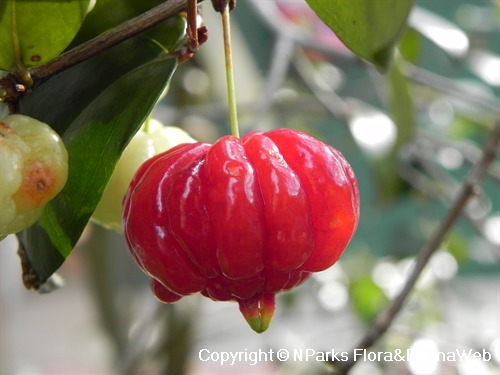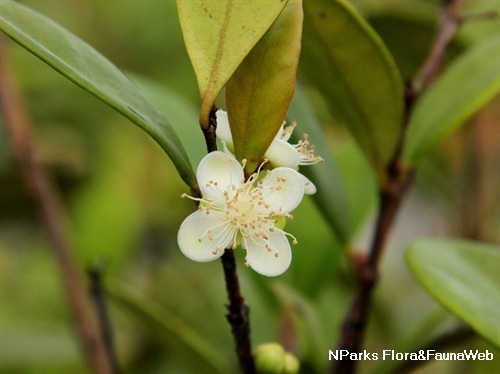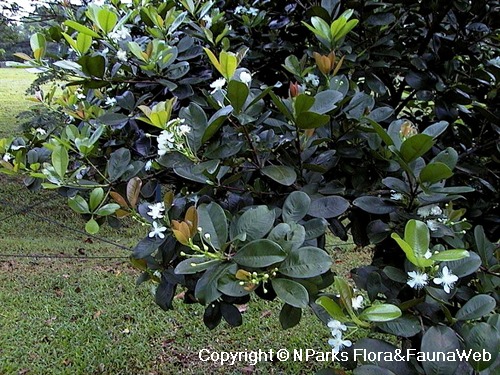
Name
Classifications and Characteristics
| Plant Division | Angiosperms (Flowering Seed Plants) (Dicotyledon) |
|---|---|
| Plant Growth Form | Tree (Shrubby (1m-5m), Small (6m-15m)) |
| Lifespan (in Singapore) | Perennial |
Biogeography
| Native Distribution | Brazil |
|---|---|
| Native Habitat | Terrestrial |
| Preferred Climate Zone | Tropical, Sub-Tropical / Monsoonal |
| Local Conservation Status | Non-native (Horticultural / Cultivated Only) |
Description and Ethnobotany
| Growth Form | A shrub or small sized tree usually grows 5-12 m tall. |
|---|---|
| Foliage | The opposite leaves are oval to elliptic, measuring 7-16 cm long. The leaves are dark green and leathery. |
| Flowers | Flowers are borne in leaf axils, with white petals and light-green sepals, which will persist with fruits. |
| Fruit | The ripe fruits are dark-purple to black, oblate, measuring about 2 cm in diameter. |
| Cultivation | Plants do well in full sun or partial shade, in organic-rich soils. |
| Ethnobotanical Uses | Edible Plant Parts : Edible Fruits Food (Fruit or Vegetable): Grumichama can be eaten raw or used to make desserts. |
Landscaping Features
| Desirable Plant Features | Ornamental Fruits, Ornamental Form |
|---|---|
| Landscape Uses | Parks & Gardens |
Plant Care and Propagation
| Light Preference | Full Sun |
|---|---|
| Water Preference | Moderate Water |
| Plant Growth Rate | Moderate |
| Rootzone Tolerance | Well-Drained Soils, Fertile Loamy Soils |
| Propagation Method | Seed |
Foliar
| Mature Foliage Colour(s) | Green |
|---|---|
| Leaf Area Index (LAI) for Green Plot Ratio | 3.0 (Tree - Intermediate Canopy) |
Floral (Angiosperm)
| Flower Colour(s) | White |
|---|
Fruit, Seed and Spore
| Mature Fruit Colour(s) | Purple, Black |
|---|---|
| Mature Seed Colour(s) | Brown |
| Seed Quantity Per Fruit | Few (1-5) |
Image Repository
Others
| Master ID | 1596 |
|---|---|
| Species ID | 2889 |
| Flora Disclaimer | The information in this website has been compiled from reliable sources, such as reference works on medicinal plants. It is not a substitute for medical advice or treatment and NParks does not purport to provide any medical advice. Readers should always consult his/her physician before using or consuming a plant for medicinal purposes. |

